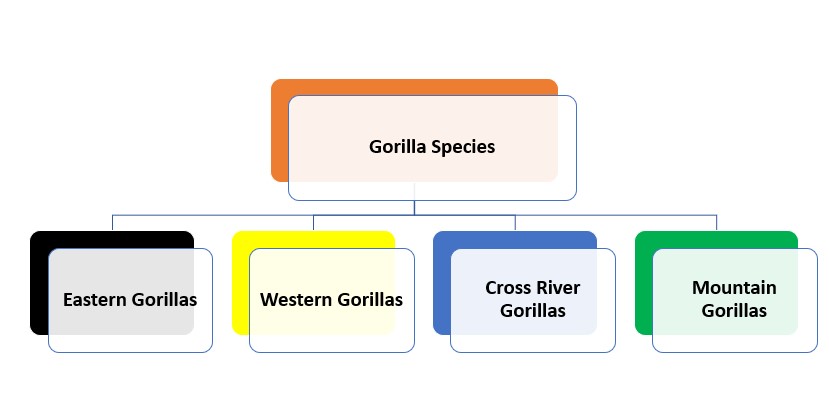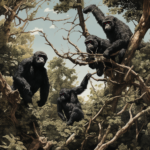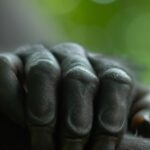In this blog post, we will provide an overview of the topic “When Were Gorillas Discovered?” We will aim to shed light on the historical discovery of gorillas and the subsequent conservation efforts.
Key Takeaways
- Gorillas were first discovered in Africa in the 19th century.
- The first recorded encounter with gorillas by Europeans was in 1847.
- The discovery of gorillas in Africa was a significant milestone in the field of zoology.
- The initial reports of gorillas sparked curiosity and fascination among scientists and explorers.
- The discovery of gorillas also raised awareness about the rich biodiversity of Africa.
- Gorillas were initially misunderstood and feared, but later studies helped to dispel myths and misconceptions about them.
- Today, gorillas are recognized as highly intelligent and social animals, and efforts are being made to protect and conserve their populations in the wild.
- The discovery of gorillas in Africa has contributed to our understanding of primate evolution and behavior.
When Were Gorillas Discovered?
Gorillas, the wonderful primates that fascinate us, have an interesting history. We’ll take a trip back in time to learn about the first sighting of these magnificent creatures.
Rumors of mysterious animals living in Africa’s rainforests spread fast. People wanted to find out if the monsters were real.
In 1847, Thomas Savage, an American missionary, saw gorillas in Gabon. He told everyone, so the existence of gorillas was no longer a myth.
Paul Du Chaillu and Richard von Beringe explored Africa to get more evidence and facts. They saw the gentle giants and shared their stories.
Scientists studied gorillas with observations and dissections. Thanks to these brave explorers, we know a lot about gorillas today.
The Gorilla Discovery is like a reality show in the animal kingdom!
Gorilla Discovery in Africa
To understand the gorilla discovery in Africa, let’s explore early explorations and encounters with gorillas, the contributions of European explorers in the 19th century, the discovery of mountain gorillas in the Virunga Mountains, and the exploration of lowland gorillas in the Congo Basin.
These key events shed light on the fascinating journey of uncovering gorillas’ existence and their habitats.
Early explorations and encounters with gorillas in Africa
Explorers were left amazed by the complexity of gorilla societies. They learned about the gorillas’ familial bonds, hierarchies and even acts of kindness. It was through these observations that we started to understand how gorilla societies work.
Knowing the habitats preferred by gorillas was also very important. From rainforests to mountains, they can adapt to many environments. This information was crucial for conservation efforts.
Dr. Jane Goodall famously observed Titus, a silverback male, being highly intelligent and a great leader. Her research disproved myths about gorilla behavior and revealed their formidable intelligence.
These explorations were a foundation for our knowledge of gorilla biology, behavior and ecology. The explorers overcome geographical barriers to uncover valuable information on this remarkable species.
Contributions of European explorers in the 19th century
In the 19th century, European explorers had a big impact on exploration. They traveled to different parts of the world, discovering new lands, cultures, and species. One of the largest contributions was in Africa.
Explorers ventured to the heart of Africa, charting unknown lands and recording the variety of animals.
They were especially amazed by the gorillas they found, which were only known through stories before then.
Here’s a table showing some of the famous explorers and what they did in Africa:
| Explorer | Contribution |
| David Livingstone | Discovered Victoria Falls |
| Henry Morton Stanley | Explored Congo River |
| Richard Francis Burton | Documented East African languages |
| Mary Kingsley | Studied African traditional religions |
Discovery of mountain gorillas in the Virunga Mountains
In 1902, Captain von Berenge stumbled upon the hidden secret of the Virunga Mountains – mountain gorillas.
This incredible discovery shed light on the existence of these endangered creatures. It opened up opportunities for research, conservation, and eco-tourism.
The Virunga Mountains, a range shared by Uganda, Rwanda, and Congo, is the perfect home for mountain gorillas. Rugged terrain and dense vegetation offer seclusion and safety.
Studies show that mountain gorillas live in family groups. They have a social structure similar to humans, with intricate bonds and cooperation.
Organizations like the International Gorilla Conservation Programme are helping to protect mountain gorillas’ habitats from deforestation and poaching. Eco-tourism is also giving local communities an incentive to join in conservation efforts.
When visiting mountain gorillas, remember to stick to guidelines to minimize disruption. We are visitors in their home – let’s treat it with respect.
Exploration of the lowland gorillas in the Congo Basin
Exploring lowland gorillas in the Congo Basin has shown remarkable insights into their lives. The lush rainforests provide a safe home for them, allowing scientists to observe them closely.
Researchers discovered that these gorillas have complex social structures with strong family ties and hierarchy. They communicate through vocalizations and gestures, revealing their rich interactions.
Studies have shown that lowland gorillas play a crucial role in keeping the Congo Basin’s ecosystem balanced.
Through their feeding and seed dispersal, they help to regrow forests, creating a healthy environment for other wildlife species.
Preserving the biodiversity of the Congo Basin is not only an ecological need, but also a moral responsibility. Each new finding brings us closer to understanding our own relation to nature and the importance of preserving all life on Earth.
Dian Fossey and Gorilla Conservation
To understand Dian Fossey and her significant contributions to gorilla conservation, let’s delve into her work with these magnificent creatures.
Introduction to Dian Fossey and her work with gorillas
Dian Fossey, a famous primatologist and conservationist, devoted her life to researching and preserving gorillas in their native environment.
She formed a strong bond with these amazing animals. She spent a lot of time studying their behavior and recording their social structures. Her research and advocacy made people aware of the need for gorilla conservation.
In the early 1960s, Fossey began an expedition to examine mountain gorillas in Rwanda. She was drawn to their complex social lives and endangered status.
Thus, she created the Karisoke Research Center in Volcanoes National Park. There, Fossey gathered data, noted gorilla habits, and fought poachers who posed a great threat to the gentle giants.
One of the most incredible aspects of Fossey’s work was her capability to build relationships with individual gorillas.
This understanding enabled Fossey to disprove wrong assumptions about gorilla aggression and show the world their peaceful nature.
Although Fossey faced numerous issues such as political instability in Rwanda and threats from poachers, she stayed determined in her commitment to gorilla conservation.
Fossey was the reason laws were passed to protect gorillas’ habitats and international collaborations were formed for the conservation of these magnificent creatures.
It was Dian Fossey who coined the phrase “gorillas in the mist“, referring to the mysterious atmosphere around these elusive animals that live in the cloud forests.
Her book, “Gorillas in the Mist“, gave an intimate view of her journey and illuminated the beauty of these animals and the difficulties they face. Her work revolutionized the way we think about gorillas and left a lasting influence on primatology.
Fossey’s study of gorilla behavior shows that observing these majestic creatures in their natural habitat can be more thrilling than watching reality TV shows.
Fossey’s research and study of gorilla behavior in the wild
Dian Fossey devoted her life to studying the complex behavior of gorillas in their natural environment. Her research offered valuable insights into their social dynamics and communication patterns.
Fossey observed gorilla groups intently and documented their behavior with precision. She paid special attention to their hierarchical structure, for example, dominant silverback males leading their family units. She also observed their diets, from vegetation to sometimes small mammals.
Fossey’s studies revealed the intricate social connections within gorilla communities. She discovered they used an intricate system of vocalizations and body language to communicate effectively.
An advice for those researching gorilla behavior is to have patience. Gorillas are wary animals who take time to trust outsiders.
By approaching them with respect and giving them time to get used to your presence, researchers can gain valuable insight without causing stress or disruption.
Overall, Dian Fossey’s work revolutionized our knowledge of gorilla behavior in the wild. Her findings continue to influence conservation efforts to protect these endangered species from threats such as habitat destruction and poaching.
Fossey’s commitment left an everlasting impression on primatology, inspiring future generations of researchers.
Dian Fossey’s commitment to gorilla conservation proves that some people will go the extra mile, even when it comes to hairy situations.
Importance of Fossey’s conservation efforts and gorilla protection
Dian Fossey’s conservation efforts and dedication to gorilla protection have had a profound effect on the world. She studied and protected the endangered mountain gorillas in Rwanda, raising awareness of their plight.
Fossey’s research revealed much about the behavior and social structures of these animals. Her findings were invaluable for gorilla conservation and shaped strategies for their protection.
Fossey’s work not only helped save individual gorillas, but also entire populations from extinction. She strongly advocated against poaching and deforestation, leading to the creation of protected areas for these creatures.
Fossey was a passionate advocate for environmental protection, making us aware of the importance of mountain gorillas in preserving biodiversity. She highlighted the need to safeguard their future.
Impact of Fossey’s book “Gorillas in the Mist” and subsequent films
Dian Fossey’s book “Gorillas in the Mist” and subsequent films had a huge effect on gorilla conservation.
Her work highlighted the need to protect them. Her narrative gave readers a glimpse into the lives of gorillas, showing their complex social structures and behaviors. This made people want to take action and support conservation initiatives.
The films based on Fossey’s experiences amplified her message. Through visuals, viewers got to witness the beauty of these gentle giants and the threats they face in their natural habitat.
Scientists, filmmakers, and ordinary citizens all worked together to strengthen research, understand gorilla behavior, and create more effective conservation strategies.
To continue Fossey’s legacy, individuals must actively participate in gorilla conservation efforts. Supporting local communities living near gorilla habitats by providing alternative livelihoods like eco-tourism or agroforestry can help protect these precious ecosystems.
Also, when visiting gorilla habitats, responsible tourism practices should be encouraged. This includes limiting visitor numbers per day, keeping a respectful distance from the animals, and following strict guidelines set by conservation organizations.
Threats to Gorillas and Conservation Efforts
To understand the threats to gorillas and the ongoing conservation efforts, let’s delve into the challenging issues they face and the measures taken to protect them.
We’ll explore the impact of habitat loss and deforestation, the grave consequences of poaching and the bushmeat trade, the effects of civil unrest and conflict on gorilla populations.
Habitat loss and deforestation
Habitat loss and deforestation threaten gorillas and their conservation efforts. Forests are cleared for farming, logging, and human settlements, leaving the gorillas without food sources and shelter. This disrupts ecosystems and exposes gorillas to more humans, leading to conflict and death.
Central Africa is a prime example of habitat loss and deforestation’s devastation. Vast forests were cut down for logging and agri-expansion, which caused a sharp decline in gorilla populations.
It is essential to address and reduce the impacts of habitat loss and deforestation on gorillas. Sustainable land-use practices, reforestation initiatives, and educating local communities can help ensure a future for gorillas in their natural habitats.
Poaching and the bushmeat trade
Gorilla populations have dwindled drastically due to poaching and the bushmeat trade. These illegal activities seek to exploit gorillas for their meat or body parts.
The demand for bushmeat has caused hunters to venture deep into the forests, resulting in habitat destruction. This not only affects gorillas, but disrupts the entire ecosystem.
Poaching and the bushmeat trade are part of an illegal wildlife trade network. Gorilla parts are smuggled for various purposes, such as traditional medicine or exotic pets, making them vulnerable.
These practices are rooted in cultural practices, limited awareness, and socioeconomic factors. Conservation efforts are needed to protect gorillas from these threats.
Raising awareness and implementing strict measures are essential to combat these illegal activities and safeguard this endangered species.
Impact of civil unrest and conflict on gorilla populations
Civil unrest and conflict have severe repercussions on gorilla populations. Their delicate habitats are disrupted, leading to a decline in numbers. This destruction causes a loss of valuable resources such as food and shelter, plus constant danger from humans.
Long-term effects are also felt, with breeding patterns and social structures within gorilla communities weakened.
To help protect these majestic creatures, conservation efforts are essential. We must pledge our support, participating in habitat protection initiatives, anti-poaching measures, and community engagement.
Conservation organizations and initiatives working to protect gorillas
Organizations and initiatives for conservation are very important in protecting gorillas. They have a major role in retaining these magnificent creatures and their habitats.
Dian Fossey Gorilla Fund International
For instance, the Dian Fossey Gorilla Fund International is devoted to gorilla conservation with research, education, and safety actions.
International Gorilla Conservation Programme (IGCP)
The International Gorilla Conservation Programme (IGCP) centers on securing mountain gorillas in Rwanda, Uganda, and the Democratic Republic of Congo.
Wildlife Conservation Society (WCS)
The Wildlife Conservation Society (WCS) is actively involved in guarding gorillas by implementing anti-poaching steps and advancing sustainable land use techniques.
Jane Goodall Institute
The Jane Goodall Institute sustains gorilla preservation through community-based conservation projects that stress the significance of local involvement.
African Wildlife Foundation (AWF)
The African Wildlife Foundation (AWF) is committed to wildlife conservation across the African continent, comprising initiatives aimed at preserving gorilla populations.
These organizations strive to protect gorillas from hazards such as habitat loss, poaching, and disease outbreaks.
Moreover, these conservation efforts go beyond just saving gorillas. By securing their habitats, these organizations also contribute to the conservation of other endangered species that share the same ecosystems.
Current Status of Gorillas

To understand the current status of gorillas, let’s delve into an overview of gorilla species and subspecies, population estimates and distribution, threats they face, and their conservation status.
We will also explore the commendable conservation efforts and success stories that contribute to the protection of these fascinating creatures.
Overview of gorilla species and subspecies
Gorillas, the biggest primates on Earth, are renowned for their immense strength and unique qualities.
Each gorilla subspecies has its own physical traits and habitats. For example, mountain gorillas live in higher altitudes and western lowland gorillas primarily stay in forests and tropical regions. These variations show the adaptations gorillas have made to live in their environment.
Let’s explore the interesting world of gorillas and the various species and subspecies of them.
Here is a table with the information:
| Species | Subspecies | Geographic Range |
| Eastern Gorilla | Mountain Gorilla | Virunga Volcanoes region of Central Africa |
| Eastern Lowland | Democratic Republic of Congo | |
| Western Gorilla | Western Lowland | Western Central Africa |
| Cross River | Nigeria and Cameroon |
Population estimates and distribution of gorillas

Gorillas’ population estimates and distribution are of immense importance. Here’s a table to explain it better:
| Gorilla Species | Estimated Population | Distribution |
| Eastern Gorillas | Approximately 5,000 | Central and East Africa |
| Western Gorillas | Around 100,000 | Central and West Africa |
| Cross River Gorillas | Merely 300 | Nigeria and Cameroon |
| Mountain Gorillas | Roughly 1,000 | Virunga Mountains |
Threats to gorillas and their conservation status
Challenges to the survival of gorillas are complex. They include:
- Habitat loss caused by deforestation and human encroachment.
- Illegal hunting and poaching for bushmeat, trophies, and traditional medicine.
- Disease outbreaks (especially Ebola) that are highly fatal to gorillas.
- Illegal wildlife trade of infants for pets or entertainment.
- Inadequate protected areas and management.
- Socio-political instability in some regions.
Conservation initiatives are in place. These include:
- Protecting national parks and reserves.
- Collaborations between local communities, governments, NGOs, and international partners.
- Community-based ecotourism programs providing alternative sources of income and raising awareness about the importance of preserving gorilla habitats.
Role of local communities and international collaborations in gorilla conservation
Local communities and international collaborations are key to gorilla conservation. Working together, they help protect and preserve gorillas in their natural habitats.
Local communities know the gorillas’ habits and behaviors, so they can be the first line of defense against threats like poaching and habitat loss. Through awareness campaigns and education programs, they become active participants in conservation efforts.
International collaborations bring resources, expertise, and support. The International Union for Conservation of Nature (IUCN) partners with local communities. This helps them share best practices and scientific research that can inform conservation on a broader scale.
Locals also have a special cultural connection to gorillas. In some areas, gorillas are seen as sacred. This cultural significance fosters a sense of responsibility and stewardship towards conservation.
The Rwandan government, local communities, and various international organizations protect the endangered mountain gorillas.
They use ecotourism and revenue-sharing programs as incentives. As a result, not only has the population of mountain gorillas increased, but locals have also seen economic benefits from tourism, improving their livelihoods.
Conservation efforts and success stories in gorilla protection
Habitat preservation is essential for gorillas’ survival. Stopping deforestation and land encroachment helps keep their food sources safe. As well, anti-poaching measures guard against illegal hunting and trade of gorilla products.
Engaging local communities also plays a role. Education, healthcare, and alternative livelihoods encourage them to protect wildlife.
Research advancements allow scientists to gain insights into gorilla behavior and health. DNA analysis is used to identify and monitor populations.
An example of success is the mountain gorillas in Rwanda’s Volcanoes National Park. They’ve seen a 25% increase due to protection measures like regular patrols and community programs.
Importance of continued efforts in gorilla conservation
Gorilla conservation is hugely important! These awesome animals play a major part in keeping biodiversity and ecological balance. Without conservation, gorillas could vanish.
Their preservation is not just good for the gorillas, but for the environment too. Gorillas help spread seeds encouraging reforestation and saving plant species. Plus, they control herbivore numbers, avoiding overgrazing and maintaining balance.
It’s also essential for research and understanding. By studying gorillas, we can learn about primate behavior, genetics, and evolution. This knowledge can help us with human biological processes and medical improvements.
To keep conservation going, we must involve local communities in sustainable practices. Eco-tourism can create economic benefits and help people appreciate the need to protect gorilla habitats. This is good for locals and encourages everyone to get involved.
Final thoughts on the significance of gorillas and their discovery
Gorillas have long stirred immense fascination. Their discovery has opened a window into the wonders of our natural world.
It has also sparked research in primatology and anthropology, giving us valuable insight into their evolution and behavior.
Moreover, gorillas serve as ambassadors for conservation. Their vulnerable status shows the need to safeguard not only them but also the ecosystems they inhabit.
Dian Fossey is a notable figure in the history of gorilla discovery. She studied mountain gorillas in Rwanda, revealing their gentle nature and human-like behaviors.
Conclusion
To conclude our exploration of gorillas and their discovery, let’s recap the key points we discussed throughout the article. Next, let’s emphasize the importance of continued efforts in gorilla conservation and highlight the significance of these remarkable creatures. In closing, let’s reflect on the awe-inspiring nature of their discovery and the lessons we can draw from their existence.




